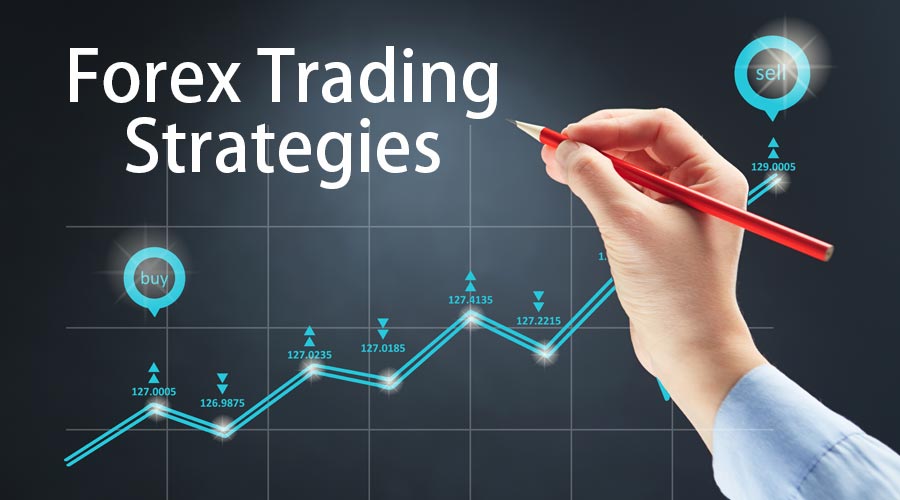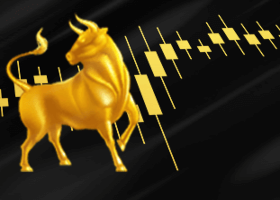
Forex Trading 101: A Beginner's Guide to the World of Currency Trading
Forex Trading 101: A Beginner's Guide to the World of Currency Trading

Forex trading, also known as foreign exchange trading, is the buying and selling of currencies on the foreign exchange market.
It is one of the largest and most liquid financial markets in the world, with an average daily trading volume of over $5 trillion.
Forex trading can be highly profitable, but it is also risky and requires a solid understanding of the basics before diving in.
Before getting started with forex trading, it is important to have a clear understanding of how the market works and the factors that influence currency prices.
This article will provide a comprehensive overview of forex trading, including what it is, how it differs from other types of trading, and why it is important in the global economy.
What is Forex Trading?

Forex trading involves the buying and selling of currencies in order to profit from fluctuations in their exchange rates.
Traders speculate on whether a currency will strengthen or weaken against another currency, and make trades accordingly.
Unlike other financial markets, such as the stock market, forex trading does not have a centralized exchange.
Instead, it operates through a global network of banks, corporations, and individuals.
Forex trading is unique in that it allows traders to profit from both rising and falling markets.
In other words, traders can make money whether a currency is appreciating or depreciating in value.
This is because currencies are always traded in pairs, with one currency being bought and the other being sold.
For example, if a trader believes that the euro will strengthen against the US dollar, they would buy the EUR/USD currency pair.
If their prediction is correct and the euro does indeed strengthen, they can sell the currency pair at a higher price and make a profit.
Forex trading plays a crucial role in the global economy as it facilitates international trade and investment.
It allows businesses to convert one currency into another in order to conduct cross-border transactions.
For example, a US company that imports goods from Europe would need to convert US dollars into euros in order to pay its suppliers.
Forex trading also provides opportunities for individuals to invest in foreign currencies and diversify their portfolios.
Understanding Currency Pairs
In forex trading, currencies are always traded in pairs.
The first currency in the pair is called the base currency, while the second currency is called the quote currency.
The exchange rate between the two currencies determines how much of the quote currency is needed to buy one unit of the base currency.
Currency pairs are quoted in two ways: direct and indirect.
In a direct quote, the domestic currency is the base currency and the foreign currency is the quote currency.
For example, a direct quote for the EUR/USD currency pair would be 1.2000, meaning that 1 euro is equal to 1.2000 US dollars.
In an indirect quote, the domestic currency is the quote currency and the foreign currency is the base currency.
For example, an indirect quote for the USD/JPY currency pair would be 110.00, meaning that 1 US dollar is equal to 110.00 Japanese yen.
There are three main types of currency pairs: major pairs, minor pairs, and exotic pairs.
Major pairs are the most commonly traded pairs and include currencies such as the US dollar, euro, British pound, Japanese yen, Swiss franc, Canadian dollar, and Australian dollar.
Minor pairs, also known as cross pairs, do not include the US dollar and are often traded against major currencies.
Exotic pairs consist of one major currency and one currency from an emerging or smaller economy.
The Role of Brokers in Forex Trading
In forex trading, brokers act as intermediaries between traders and the interbank market, where currencies are bought and sold.
They provide traders with access to the market and execute their trades on their behalf.
Brokers earn money through spreads, which are the difference between the buying and selling prices of a currency pair.
There are two main types of brokers: market makers and ECN brokers.
Market makers, also known as dealing desk brokers, make money by taking the opposite side of their clients' trades.
They create a market for their clients by quoting both a buying and selling price for each currency pair.
Market makers often offer fixed spreads, which means that the spread remains the same regardless of market conditions.
ECN brokers, on the other hand, connect traders directly to the interbank market.
They do not take the opposite side of their clients' trades but instead match buy and sell orders from different market participants.
ECN brokers often offer variable spreads, which means that the spread can widen or narrow depending on market conditions.
When choosing a broker, it is important to consider factors such as regulation, reputation, trading platform, customer support, and trading conditions.
It is recommended to choose a broker that is regulated by a reputable financial authority, as this provides an extra layer of protection for traders.
It is also important to test out a broker's trading platform and customer support before committing to an account.
Basic Forex Trading Strategies for Beginners
There are many different trading strategies that can be used in forex trading, but it is important for beginners to start with simple strategies and gradually build their skills and knowledge.
Here are a few basic strategies that beginners can consider:
1. Trend following: This strategy involves identifying the direction of the overall trend and trading in the same direction.
Traders can use technical indicators such as moving averages or trend lines to identify trends.
2. Breakout trading: This strategy involves entering a trade when the price breaks out of a range or a significant level of support or resistance.
Traders can use indicators such as Bollinger Bands or pivot points to identify potential breakout levels.
3. Range trading: This strategy involves trading within a range-bound market, buying at the bottom of the range and selling at the top.
Traders can use indicators such as oscillators or support and resistance levels to identify potential entry and exit points.
It is important for beginners to stick to a strategy and not deviate from it based on emotions or short-term market fluctuations.
It is also important to practice proper risk management and not risk more than a certain percentage of their trading capital on any single trade.
The Importance of Risk Management in Forex Trading
Risk management is a crucial aspect of forex trading that is often overlooked by beginners.
It involves identifying and managing potential risks in order to protect trading capital and minimize losses.
Without proper risk management, traders can quickly lose all of their capital and be forced to exit the market.
There are several risk management techniques that traders can use, including setting stop-loss orders, using proper position sizing, and diversifying their portfolios.
A stop-loss order is an order placed with a broker to automatically close a trade if the price reaches a certain level.
This helps to limit potential losses and protect trading capital.
Proper position sizing involves determining the appropriate amount of capital to risk on each trade.
This can be done by calculating the percentage of capital that will be risked on each trade, based on factors such as the size of the trading account and the risk tolerance of the trader.
Diversifying a portfolio involves spreading out investments across different currency pairs and other financial instruments in order to reduce the impact of any single trade or market event.
It is important for traders to have a clear understanding of their risk tolerance and to only risk what they can afford to lose.
It is also important to continuously monitor and adjust risk management strategies as market conditions change.
Technical Analysis vs Fundamental Analysis in Forex Trading
Technical analysis and fundamental analysis are two different approaches to analysing the forex market.
Technical analysis involves studying historical price data and using technical indicators to predict future price movements.
It is based on the belief that historical price patterns and trends can provide insights into future price movements.
Technical analysts use a variety of tools and techniques, such as chart patterns, trend lines, moving averages, and oscillators, to identify potential entry and exit points.
They also use indicators such as the Relative Strength Index (RSI) or the Moving Average Convergence Divergence (MACD) to confirm or validate their trading decisions.
Fundamental analysis, on the other hand, involves analysing economic, political, and social factors that can influence currency prices.
It is based on the belief that the value of a currency is determined by the underlying economic fundamentals of the country.
Fundamental analysts study factors such as interest rates, inflation rates, GDP growth, employment data, and geopolitical events to make trading decisions.
Both technical analysis and fundamental analysis have their strengths and weaknesses, and many traders use a combination of both approaches in their trading strategies.
It is important for traders to have a solid understanding of both types of analysis in order to make informed trading decisions.
Common Forex Trading Mistakes to Avoid
There are several common mistakes that beginners often make in forex trading.
By being aware of these mistakes and taking steps to avoid them, traders can increase their chances of success. Here are a few common mistakes to avoid:
1. Lack of proper education: Many beginners jump into forex trading without taking the time to learn the basics.
It is important to educate oneself about the market, trading strategies, risk management, and other important aspects of forex trading before getting started.
2. Overtrading: Beginners often get caught up in the excitement of trading and make too many trades. It is important to be patient and wait for high-probability trading opportunities.
3. Emotional trading: Trading based on emotions, such as fear or greed, can lead to poor decision-making and significant losses. It is important to stick to a trading plan and not let emotions dictate trading decisions.
4. Not using stop-loss orders: Beginners often neglect to use stop-loss orders, which can result in large losses if the market moves against them. It is important to always use stop-loss orders to protect trading capital.
5. Chasing losses: When a trade goes against them, beginners often try to "recover" their losses by taking larger risks. This can lead to even bigger losses and a downward spiral. It is important to accept losses and move on to the next trade.
It is important for beginners to learn from their mistakes and continuously improve their trading skills. By keeping a trading journal and analysing past trades, traders can identify patterns and areas for improvement.
The Benefits and Risks of Forex Trading
Forex trading offers several benefits, but it also comes with its fair share of risks. Some of the benefits of forex trading include:
1. High liquidity: The forex market is the most liquid financial market in the world, with high trading volumes and tight spreads.
This means that traders can enter and exit trades quickly and at competitive prices.
2. 24-hour market: The forex market is open 24 hours a day, five days a week, allowing traders to trade at any time that is convenient for them.
This flexibility is especially beneficial for traders who have other commitments during regular trading hours.
3. Potential for high returns: Forex trading offers the potential for high returns, especially when leverage is used. Leverage allows traders to control larger positions with a smaller amount of capital, amplifying both profits and losses.
However, forex trading also comes with its fair share of risks.
Some of the risks of forex trading include:
1. Volatility: The forex market is highly volatile, with prices constantly fluctuating. This volatility can lead to significant gains, but it can also result in large losses if trades are not managed properly.
2. Leverage: While leverage can amplify profits, it can also amplify losses. It is important for traders to use leverage responsibly and not risk more than they can afford to lose.
3. Market manipulation: The forex market is decentralized and largely unregulated, which makes it susceptible to market manipulation.
Traders should be aware of the risks of fraud and manipulation and choose reputable brokers.
Before getting started with forex trading, it is important to carefully weigh the risks and benefits and to only invest what one can afford to lose.
It is also important to continuously educate oneself and stay informed about market developments.
Choosing the Right Trading Platform for Forex Trading
Choosing the right trading platform is crucial for successful forex trading.
A trading platform is the software that traders use to execute trades, analyze market data, and manage their accounts.
There are several factors to consider when choosing a trading platform, including:
1. User-friendly interface: The trading platform should be easy to navigate and use, with clear and intuitive features. It should also provide access to a wide range of tools and indicators for technical analysis.
2. Reliability: The trading platform should be reliable and stable, with minimal downtime or technical issues. It should also provide fast execution of trades and real-time market data.
3. Charting capabilities: The trading platform should provide advanced charting capabilities, with a wide range of technical indicators and drawing tools. This allows traders to analyze market trends and make informed trading decisions.
4. Mobile compatibility: The trading platform should be compatible with mobile devices, allowing traders to trade on the go. This is especially important for traders who travel frequently or have other commitments.
5. Customer support: The trading platform should provide reliable customer support, with prompt responses to inquiries or technical issues. It is important to choose a platform that offers 24/7 customer support, as the forex market operates around the clock.
It is also important to test out a trading platform before committing to an account. Many brokers offer demo accounts, which allow traders to practice trading with virtual money and familiarize themselves with the platform.
Tips for Successful Forex Trading as a Beginner
Here are a few tips for success in forex trading as a beginner:
1. Educate yourself: Take the time to learn the basics of forex trading, including market dynamics, trading strategies, risk management, and technical and fundamental analysis.
There are many educational resources available, including books, online courses, and webinars.
2. Start small: Begin with a small trading account and trade with small position sizes.
This allows you to gain experience and confidence without risking large amounts of capital.
3. Stick to a strategy: Develop a trading strategy that suits your trading style and risk tolerance, and stick to it.
Avoid jumping from one strategy to another based on short-term market fluctuations.
4. Practice proper risk management: Always use stop-loss orders to protect your trading capital and never risk more than a certain percentage of your account on any single trade.
5. Be patient and disciplined: Forex trading requires patience and discipline. Avoid chasing trades or letting emotions dictate your trading decisions. Stick to your trading plan and be consistent in your approach.
6. Continuously learn and improve: Forex trading is a lifelong learning process. Stay informed about market developments, analyze your past trades, and continuously seek to improve your trading skills.
Conclusion
Forex trading can be highly profitable, but it also comes with its fair share of risks
REVERSAL AREA INDICATOR
https://www.mql5.com/en/market/product/59520?source=Site+Profile+Seller
Top Bottom Scalper
https://www.mql5.com/en/market/product/59528?source=Site+Profile+Seller
Dual Trend Scalper
https://www.mql5.com/en/market/product/59529?source=Site+Profile+Seller
Reversal Signals Scalper Dashboard
https://www.mql5.com/en/market/product/59530?source=Site+Profile+Seller
Scalper Signals Trader
https://www.mql5.com/en/market/product/68316?source=Site+Profile+Seller
Smart Multi Systems
https://www.mql5.com/en/market/product/68318?source=Site+Profile+Seller
Hni Scalp Swing indicator
https://www.mql5.com/en/market/product/69973?source=Site+Profile+Seller
Multi Trend Signal Dashboard
https://www.mql5.com/en/market/product/71009?source=Site+Profile+Seller
Scalp Arrow Exit Signals
https://www.mql5.com/en/market/product/47776?source=Site+Profile+Seller


